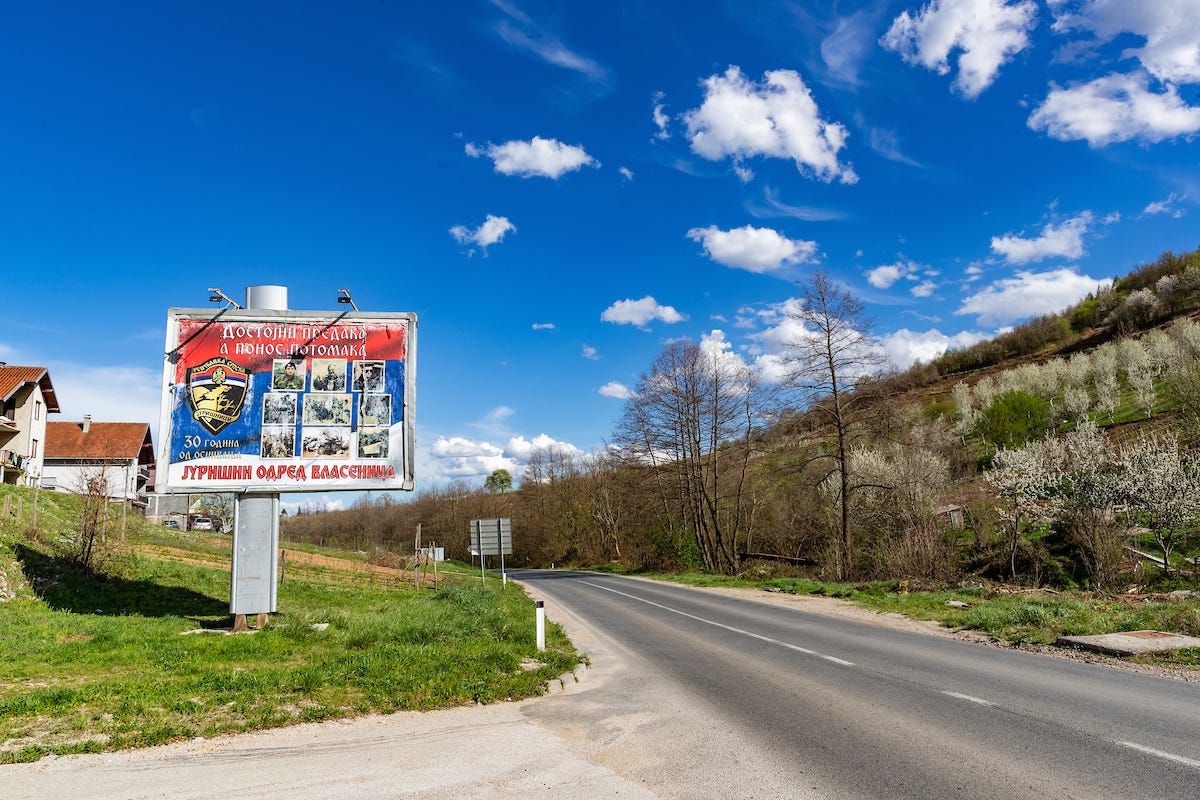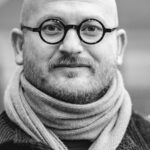It is 2024, and the shadow of the Yugoslav Wars still looms large over Bosnia and Herzegovina. The region remains indelibly marked by one of the most harrowing narratives of the late 20th century. The Bosnian War, a brutal segment of these conflicts, is more than a historical chapter; it is a present reality, a stark reminder of the terror and inhumanity that humans can inflict on one another. This is a country where the scars of war are not merely confined to the past; they are an integral part of the landscape, both physical and psychological.
As I journeyed through Bosnia this April, the weight of history was palpable, a presence that seemed to seep from the very earth itself. The picturesque countryside, with its rolling hills and tranquil rivers, offers a deceptive serenity. But beneath this beauty lies a darker reality, one that is etched into the soul of the nation, a testament to the suffering that unfolded here not so long ago.
The infamous Srebrenica massacre, now recognised globally as genocide, serves as the most poignant emblem of the Bosnian War’s brutality. Over 8,000 Bosniak men and boys were slaughtered by Bosnian Serb forces in July 1995, in what remains the worst atrocity on European soil since World War II. The systematic nature of this atrocity, the cold, calculated effort to erase these lives from history, is a chilling reminder of the depths of human cruelty. As I stood at the Srebrenica Genocide Memorial in Potocari, the weight of this history pressed down on me. The rows of white marble gravestones, stretching endlessly across the green landscape, tell a story of loss that words alone cannot capture. Each name engraved on these stones represents a life brutally cut short, a family torn apart, a community shattered. The silence here is deafening, broken only by the occasional rustle of the wind, nature’s way of reminding us that life continues, even amidst such overwhelming grief.
The infamous Srebrenica massacre, now recognised globally as genocide, serves as the most poignant emblem of the Bosnian War’s brutality. Over 8,000 Bosniak men and boys were slaughtered by Bosnian Serb forces in July 1995, in what remains the worst atrocity on European soil since World War II. The systematic nature of this atrocity, the cold, calculated effort to erase these lives from history, is a chilling reminder of the depths of human cruelty. As I stood at the Srebrenica Genocide Memorial in Potocari, the weight of this history pressed down on me.


The rows of white marble gravestones, stretching endlessly across the green landscape, tell a story of loss that words alone cannot capture. Each name engraved on these stones represents a life brutally cut short, a family torn apart, a community shattered. The silence here is deafening, broken only by the occasional rustle of the wind, nature’s way of reminding us that life continues, even amidst such overwhelming grief.
The infamous Srebrenica massacre, now recognised globally as genocide, serves as the most poignant emblem of the Bosnian War’s brutality. Over 8,000 Bosniak men and boys were slaughtered by Bosnian Serb forces in July 1995, in what remains the worst atrocity on European soil since World War II. The systematic nature of this atrocity, the cold, calculated effort to erase these lives from history, is a chilling reminder of the depths of human cruelty. As I stood at the Srebrenica Genocide Memorial in Potocari, the weight of this history pressed down on me. The rows of white marble gravestones, stretching endlessly across the green landscape, tell a story of loss that words alone cannot capture. Each name engraved on these stones represents a life brutally cut short, a family torn apart, a community shattered. The silence here is deafening, broken only by the occasional rustle of the wind, nature’s way of reminding us that life continues, even amidst such overwhelming grief.
But the horror of Srebrenica is just one part of Bosnia’s tragic history. Throughout the country, thousands of people remain missing, their fates unknown. The discovery of mass graves continues to this day, each new find reopening wounds that have never fully healed. For the families of the missing, the pain is endless—a cruel limbo of hope and despair as they wait for news that may never come. The war in Bosnia was not just a conflict between armies; it was a war on civilians. Over two million people were displaced, forced to flee their homes and their lives. The violence was not only physical but psychological, as communities were torn apart by fear, distrust, and the ever-present threat of death. The legacy of this violence lingers in the memories of those who survived, in the stories they tell, or choose not to tell, and in the way they navigate the world today.
The Dayton Agreement, which brought an end to the fighting in 1995, has left Bosnia divided, both physically and emotionally. The agreement created a complex political structure, dividing the country into two entities: the Federation of Bosnia and Herzegovina, predominantly Bosniak and Croat, and the Republika Srpska, predominantly Serb. This division reflects the ethnic and religious fault lines that fueled the war, and it has done little to heal the wounds of the past. Today, Bosnia and Herzegovina is a country still grappling with its history. The political structures created by Dayton have entrenched the divisions that the war exacerbated, making it difficult for the nation to move forward. The legal amendments in 2021 that criminalised genocide denial were intended to address historical revisionism, but they have instead deepened national divides, particularly in the Republika Srpska, where leaders continue to challenge the legitimacy of the state.
Bosnia’s past is a shadow that looms over its present. The scars of war are visible everywhere, in the buildings that still bear the marks of bullets and shells, in the memorials that dot the landscape, and in the faces of those who lived through the conflict. But these scars are also invisible, hidden in the hearts and minds of those who carry the trauma of war with them every day. As Bosnia and Herzegovina moves forward, it must do so with the weight of its history pressing down on it. The road to reconciliation and healing is long and fraught with challenges, but it is a journey that the country must undertake if it is to build a future free from the shadows of its past.
If you enjoyed reading this, please consider making a paid subscription. Your support helps cover the costs of travelling and other logistics, allowing us to continue providing independent and in-depth reporting.
This is the first of five reportages, with four more coming each week, starting this Sunday, Oct 6, 2024.
Thank you for being part of this journey as we explore the stories that shape our world.
Vudi Xhymshiti, founder of The Frontliner Magazine, brings a wealth of experience in reporting on global armed conflicts and political issues. With a background in Documentary Photography and Photojournalism from the University of the Arts London, and studies in Political Science, International Relations, and Diplomacy, Vudi skilfully merges human rights insights with dedicated journalism. His ethical and thoughtful reporting has graced top publications like The Guardian and The New York Times. At The Frontliner, launched in 2023, he explores the profound effects of conflicts on law, human rights, and freedoms, continuing his commitment to impactful storytelling.


